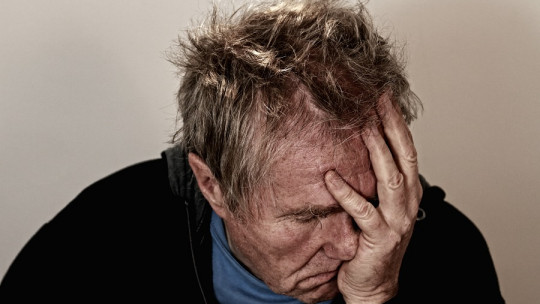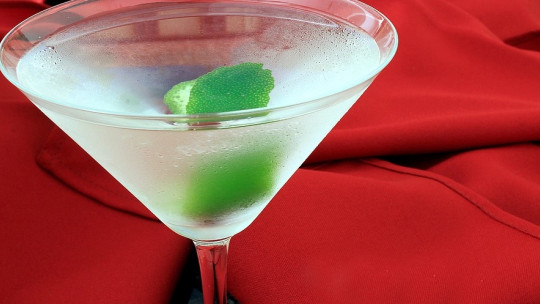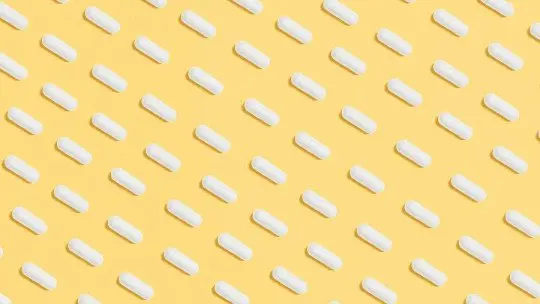
Alcohol entails a whole series of psychological and physical manifestations, which range from least to greatest severity. Among its milder consequences, we can experience facial redness. After drinking a couple of glasses of wine or beer, we can observe how our face turns red. The specific technical term for this condition is “alcohol flushing reaction.”
Thus, many people experience facial redness when they drink alcohol, this is not the only manifestation regarding the face, there are other less known and frequent, but more serious manifestations. In this article we expose all the signs of alcoholism on the face that we can find in a person
What are the main signs of alcoholism on the face?
According to the World Health Organization (WHO), alcoholism is defined “as any impairment in the physical, mental or social functioning of a person, the nature of which reasonably suggests that alcohol is part of the causal link that causes said disorder.” “.
To eliminate alcohol, our liver breaks down the ethanol that enters our stomach and intestine and circulates through our blood. Some digestive enzymes help metabolize and break down alcohol before our body eliminates it. Thus, the alcoholic byproducts created after its breakdown in the body can cause adverse symptoms on many levels.
Among the physical signs in alcoholic people, some manifestations regarding the face stand out, such as facial redness, skin infections, acne… Next, we are going to see the most prominent expressions of alcohol in the physiognomy of the face.
1. Facial redness
The “alcohol flushing reaction” refers to the facial redness that occurs after ingesting alcohol. In some people, this effect happens every time they drink a glass or two of wine However, in others it only occurs when they ingest large quantities. Even so, we can consider this reaction as common.
The most important factor in determining whether we turn red after drinking a beer is genetics. This is related to the deficiency of a specific protein. Thus, people with a deficiency of the enzyme aldehyde dehydrogenase (known as ALDH2) are more likely to suffer from this redness, even from ingesting small amounts of ethanol.
But what makes this enzyme responsible for facial redness? ALDH2 is responsible, among other things, for the process of eliminating toxic substances after alcohol consumption. By having low levels of this enzyme, all the toxic components that should have been expelled accumulate in our body, causing the blood vessels to dilate and, consequently, the skin to turn red, especially on the face and neck.
Over time and excessive alcohol consumption, this facial redness can lead to couperose what we commonly know as “spider veins”, this refers to the visibility of blood capillaries through the skin of the face.
2. Skin infections
Skin infection and sores on the face are other common signs that we can observe on the face of people who suffer from alcoholism. This happens because Excessive alcohol consumption can affect a person’s immune system and, consequently, it is more exposed to all types of infections, including skin infections.
Additionally, alcohol has a dehydrating effect on the skin. Thus, dryness, along with exposure to infections, causes sores to become visible and skin that is more emaciated than usual.
3. Yellow skin
The manifestations on the face of an alcoholic person may be the consequence of conditions in other systems or organs of the body. Chronic alcohol can lead to various types of diseases, The liver is one of the organs most affected by excessive alcohol consumption, since it is responsible for its decomposition. There are three major clinical signs of liver disease that, from lesser to greater severity, are: alcoholic hepatic steatosis, alcoholic hepatitis, and alcoholic cirrhosis. These refer to a more or less serious inflammation of the liver.
One of the consequences of alcoholic hepatitis is a yellowish tone to the skin and the white part of our eyes. Although, depending on genetics, there may be people who drink in moderation and suffer from alcoholic hepatitis, it is important to stop consuming alcohol knowing that we suffer from this disease.

4. Facial hair growth
Facial hair growth in women may be due to high levels of so-called male hormones (androgens). Alcohol does not directly produce these hormones, the excess production of androgens in the body is the last consequence of a series of metabolic reactions.
Alcohol has a high sugar content. Thus, by consuming high amounts of alcohol, we are consequently consuming large amounts of glucose that our body has to metabolize; This causes greater production of the hormone insulin, produced by the pancreas, to regulate blood glucose levels. To the consume high amounts of glucose frequently there is a risk of developing a condition known as insulin resistance, the cells capable of storing glucose begin to respond in a deficient way.
When insulin resistance occurs, the result is elevated production of androgens in the body causing the appearance of acne or hirsutism (excessive hair growth in women).
5. Premature aging
Alcohol has various skin effects, including premature aging. As we mentioned before, excessive alcohol consumption can cause dryness of our skin. This occurs because andAlcohol causes us to dehydrate more quickly and our skin loses fluids On the other hand, this loss of water causes a loss of vitamins and nutrients, for example, the loss of vitamin A, which helps our skin stay healthy and young.
6. Swelling of the face
Alcohol consumption can cause our body to retain fluids in the face, thus causing swelling. This is known as facial edema, and it responds to various causes. In the case of alcohol, it leads to a state of dehydration that the body tries to compensate by retaining water Consequently, the blood vessels widen and swell.
7. Red eyes
Constant and excessive consumption of alcoholic beverages causes red blood cells to transport less oxygen, so the fine blood vessels in the sclera in the eyes dilate. This causes a greater amount of blood to pass through these “ducts.” which makes the redness of the eyes visible to the naked eye.
8. Dry and weak hair
Drinking too much can damage hair and cause alopecia; although it does not cause hair loss on its own. Hair may be drier when drinking alcoholic beverages. As we mentioned before, alcohol causes dehydration in our body. This dehydration can further damage hair strands, which are a cyclical process in the body
On the other hand, high blood alcohol levels reduce the levels of vitamin B16, which is essential for maintaining the number of red blood cells in the body, as well as the amount of oxygen in the blood. Vitamin C decreases significantly, and zinc, a basic mineral for the formation of keratin, is necessary, which decreases in quantity. Collagen is vital for the structural integrity of the body, and a lack of vitamins C and E results in this decrease in quantity.
Do you want to start addiction treatment?
If you are looking for detoxification and addiction treatment services, contact us.
In CITA Clinics We specialize in caring for people who have developed addictive disorders with or without drug use.








